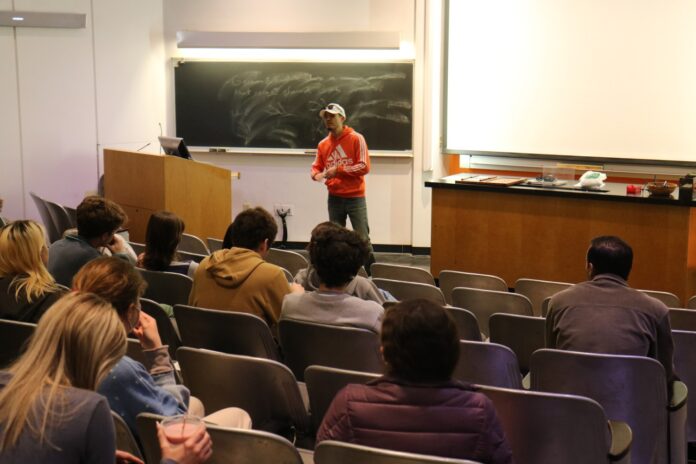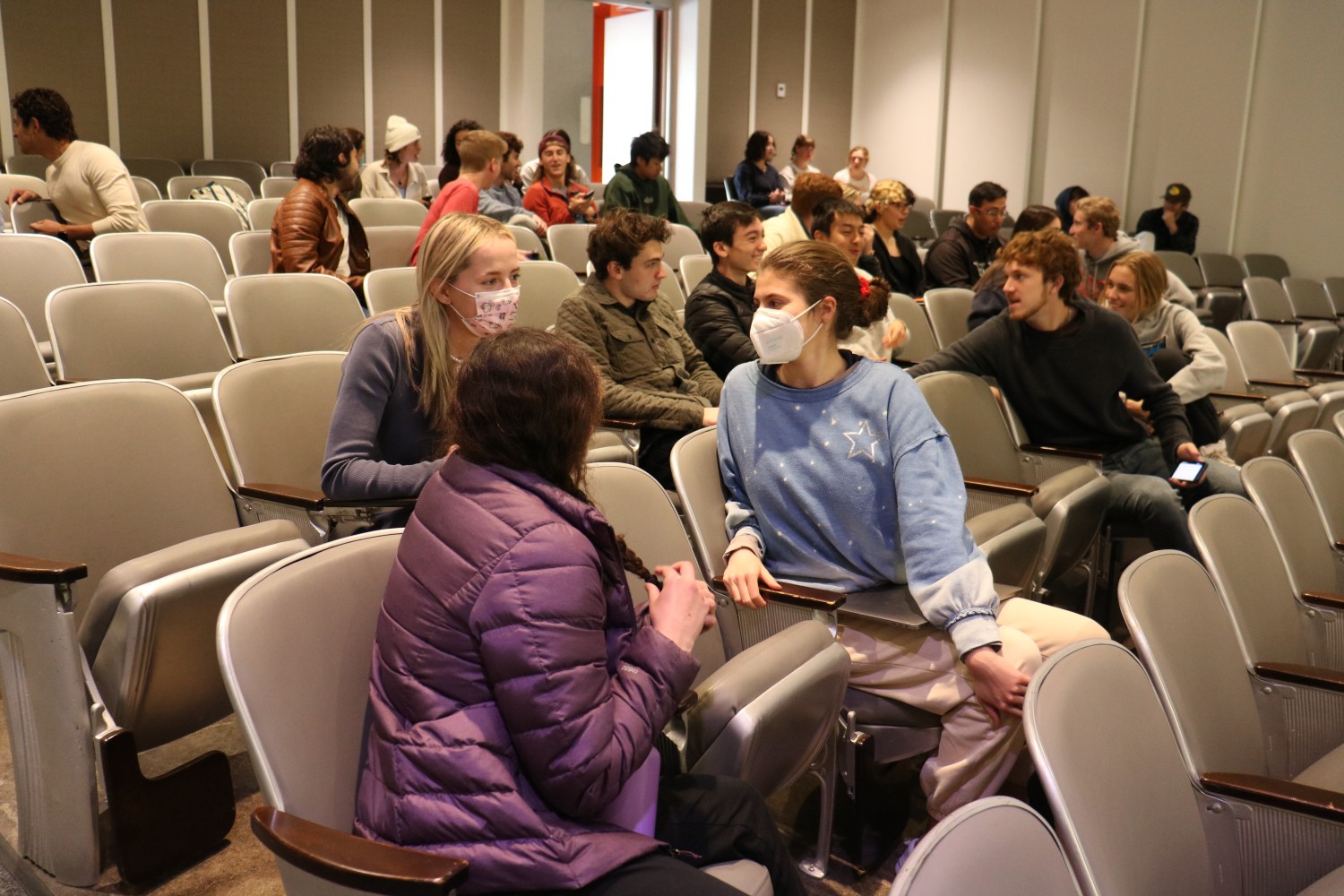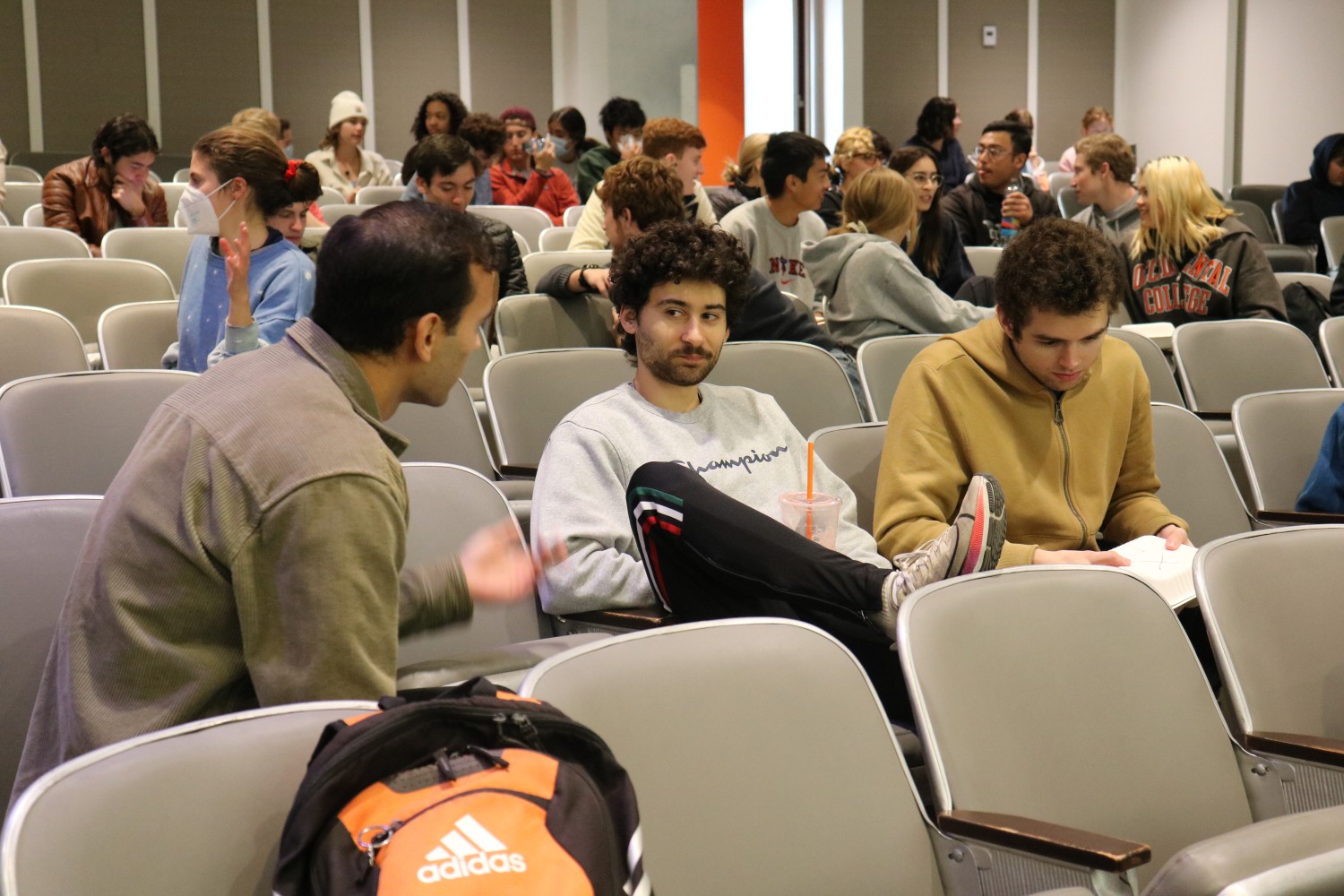
Tye Hernandez (senior) said when he was on the college’s men’s soccer team, Justice Equity Diversion Inclusion (JEDI) talks gave him the opportunity to share a part of himself with his teammates that he never had the chance to before. According to Hernandez, JEDI talks hold space for critical conversations without forcing them to happen, giving athletes the opportunity to grow.
“We had a particular conversation around homophobia within sports. That really stood out to me, because at the time, I hadn’t come out yet and identified as gay,” Hernandez said. “It was just having a conversation and having a dedicated time as a team to talk about something as relevant, timely and personal as queer identity. It was a space where I was able to share with my team in like a really healthy way, just another part of something that makes me, me.”
JEDI conversations at both the staff and student-athlete levels began in Fall 2020. According to Coordinator of JEDI Programming Cori Vallembois, due to the COVID-19 pandemic these conversations were initially conducted via Zoom but then transitioned to in-person when students returned to campus in Fall 2021.
“These conversations provide an intentional space to discuss the intersectionality of sports and one’s personal thoughts and identity in relation to issues of justice, equity, diversity and inclusion,” Vallembois said.
According to Vallembois, up until the current academic year, Occidental Athletics staff members and all varsity teams participated in six JEDI conversations per year; three in the Fall semester and three in the Spring semester. The format of this conversation was a presentation style and usually lasted 45-60 minutes.
The committee has shifted gears this year, according to Vallembois. Both the JEDI committee and varsity teams are hosting shorter conversations more frequently, with each varsity team being required to have a minimum of 12 JEDI conversations during their seasons.
“I firmly believe that the responsibility of doing JEDI work should not fall on one person, or one group of people — everyone should be putting in the time and effort, everyone should be doing the work,” Vallembois said.
Hunter Leong (sophomore), a member of the college’s men’s golf team, discussed the important idea of recognizing financial privilege as a team last year.
“We are one of the most expensive athletic teams and we are very privileged to go to facilities,” Leong said. “We have to think about how privileged we are.”
Ariel Shweiki (junior), a member of the college’s lacrosse team, said her team also talked about hopefully recognizing and being more sensitive towards economic differences in their team discussions. According to Shweiki, the team conducts their 12 JEDI conversations through news articles: teammates are paired up with each other and each week a new pair is asked to bring an article to discuss at the end of practice. Shweiki said these types of conversations require guidance beyond a news article.
“At a place like Oxy, I think people forget that not everybody comes from the same background, because superficially it can look like we all do, just because of the private liberal arts college that we go to. And so those kinds of conversations are not one[s] that you can get from just reading a news article,” Shweiki said.
According to all the athletes, many of these talks also focused on gender equity, mental health, racism and homophobia within sports. Softball player Ariel Lashinsky (junior) said that there has been positive change when addressing specific topics.
“Our discussion of mental health in collegiate athletics has influenced our team culture and understanding of each other’s needs going into the start of our season, which will undoubtedly be stressful and overwhelming at times,” Lashinsky said via email.
According to softball player Philycia Pedrosa (sophomore), her team is following a similar format to that of the lacrosse team: Pedrosa said teammates are paired up and asked to bring an article for the team to read, along with questions for everyone to discuss.
“I think it’s more effective this way, because it kind of just brings us all together. And it reminds us that we’re all on the same page,” said Pedrosa. “Sometimes some people may think a different way. But then when you have someone by your side, then you just feel more comfort.”
Hernandez said the new format allows for more interaction from the members of the teams themselves. He said it makes the conversation more constant, rather than one or two monthly talks that athletes might miss.
“The objective is to consistently be talking about stuff and getting a wider range of perspectives and lived experiences to shed light on different issues or realities that maybe one person might not be able to see or experience,” Hernandez said. “This new format allows folks to learn as well as push themselves to be a part of the solution and no longer part of problems.”
Lashinsky said that she also sees her teammates are more invested and willing to participate in conversations because they understand that the topics are important to each other.
“The discussions flow more naturally with the specific questions the presenters prepare. In the past, when coaches used to lead them, sometimes they would feel like lectures and student-athletes felt unprepared or uneducated about the topic. Now, because the whole team receives and reads the article, all student-athletes should be more comfortable and willing to participate,” Lashinsky said via email.
According to Shweiki, these changes also bring some new challenges. In the past JEDI conversations, Shweiki said athletes were given phrases or tools on how to navigate specific topics in an athletic setting, and because of this, it was clearer to see how people were learning from these talks. But with this new format, Shweiki said examples of change are less evident.
Vallembois recognized there were drawbacks of not only the new format, but also regarding who is leading these conversations.
“There isn’t always someone in the room who is directly affected by a particular topic. For example, if I chose to discuss an article about difficulties that athletes with a chronic illness may face during training, I would not be able to personally speak to that lived experience — but that doesn’t mean we shouldn’t be talking about it,” said Vallembois.
Shewiki said she saw this drawback in conversation with her team regarding her depth of understanding with some of the materials. Last year, she said she felt more comfortable with the ability to ask questions about topics she was unfamiliar with because the people giving the presentations were more trained and knew how to answer those questions.
“The space is there to go and ask a representative from JEDI a specific question, but not a space where that would then get brought back to the team and translated to the whole,” Shewiki said.
According to Hernandez, athletes can potentially get lost in the motion from having these conversations right after practice.
“Maybe you have practice in the lift after and now you have time to squeeze in a really heavy topic in 5 to 10 minutes, I think sometimes a lot of the detail could get lost in that,” said Hernandez. “But I’m hopeful that this is still a better alternative than what we had before. And I’m also hopeful that moving forward, the agenda committee will be able to recognize any pitfalls and shortcomings and work to mitigate that.”
According to Shweiki, the potential issue of high emotions after practice and staying in the same space can take away from the talk.
“We’re supposed to be stretching, but also supposed to be focused on having a really deep conversation. I would just like to see a little bit of that structure brought back whether that’s sitting in a conference room, and we’re having a conversation about it, or we are going through JEDI,” said Shweiki. “I think there’s something about shifting to a specific space that centers everybody in on this is what we’re doing. We’re in a meeting room to have a discussion.”
No matter their format or changes, the main goal, according to all the athletes, is to create more open conversation and progress around topics of social justice.
Hernandez, who is also a track and field athlete, said looking to the future of a more inclusive environment means hearing more conversations surrounding social justice outside of JEDI talks and more collaboration between sports teams.
“I think what happens with track and field is probably very different than what happens with women’s volleyball, or basketball or even baseball. And so, finding ways for all the different sports teams to come together, I think would be a really powerful way to grow as an entire Oxy community,” said Hernandez.
According to Lashinsky, in popular media, athletes see and hear discourse that tells them they need to stick to their sport and stay out of social justice issues. Yet they are also often told and understand their identity is not defined by their sport.
“As students and as athletes, it is important to both educate ourselves about present issues in our society and examine how they intersect with athletics,” Lashinsky said via email. “In order to make athletics and our athletic community more inclusive, we must continue to have these conversations and discussions that further our critical understanding of issues in our society that relate to important pieces of our identities as students and as athletes.”
Contact Sarah Jageler at jageler@oxy.edu.
![]()




































